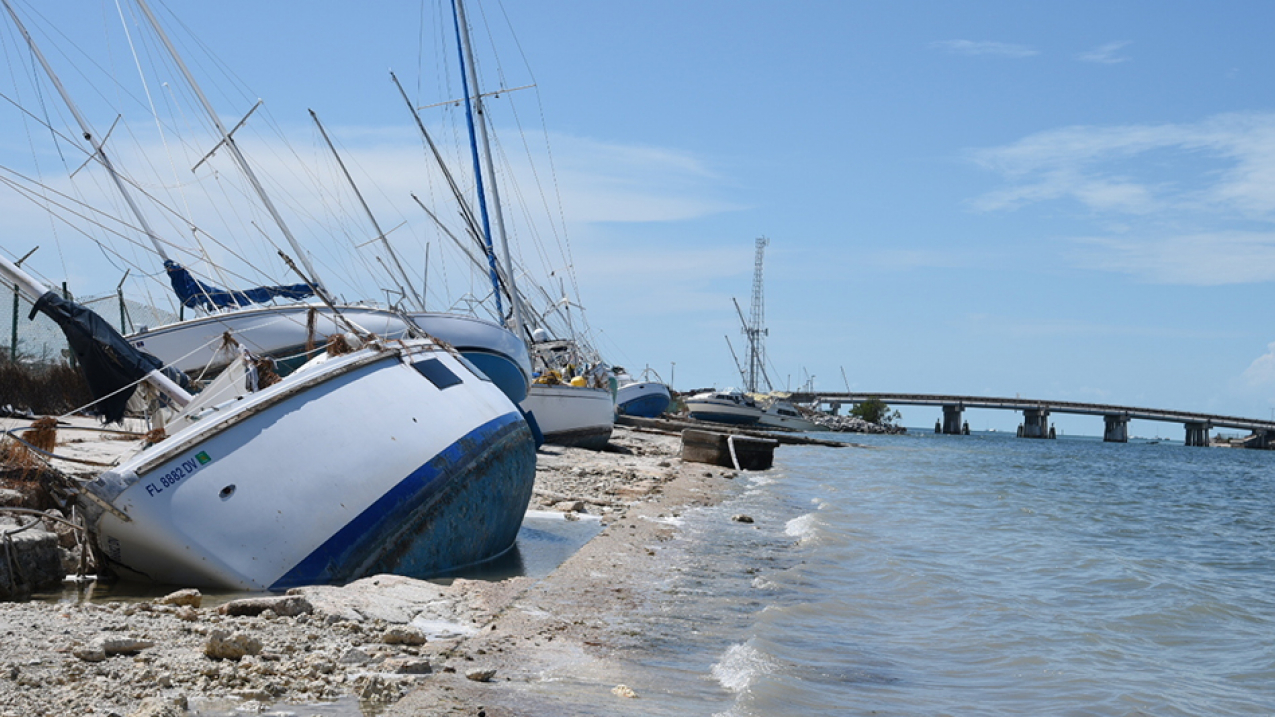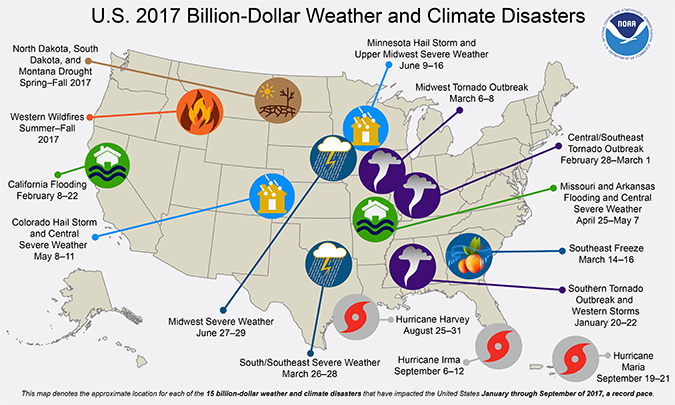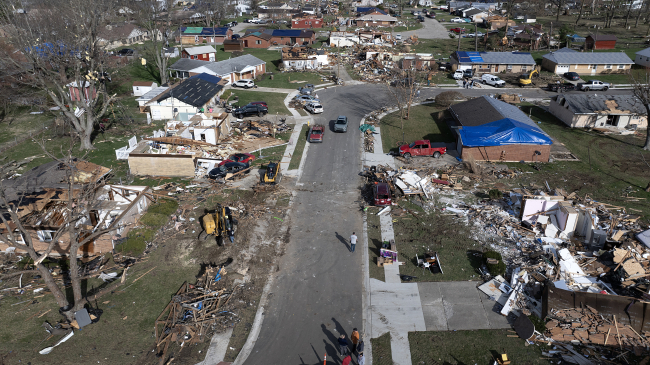Nation experienced 6 billion-dollar weather disasters since June
Though September was warmer and drier than average for the U.S, it will long be remembered for the devastating impacts from Hurricanes Irma and Maria, as well as the remnants of Harvey, to southern parts of the U.S. and the Caribbean.

Sailboats and personal craft litter the shoreline near Naval Air Station Key West, Florida, Sept. 15, 2017, following Hurricane Irma. (Image credit: U.S. Coast Guard)
Here’s how last month and the year to date fared in terms of the climate record:
Climate by the numbers
September 2017
The September nationally averaged temperature was 66.3 degrees F, 1.4 degrees above average. Near-record warmth was observed in parts of the Great Lakes and Northeast. The precipitation total for the month was 2.22 inches, 0.27 of an inch below average, ranking among the driest one-third in 123-years of record keeping.
The year to date
The year to date (January–September) average temperature for the contiguous U.S. was 57.7 degrees F, 2.7 degrees above average, the third warmest on record. Above-average temperatures spanned the nation for the first nine months of the year. The year to date precipitation was 26.36 inches, 3.16 inches above average, the wettest on record for this period.
Billion-Dollar Weather and Climate Disaster Update
Since June 2017, six additional weather and climate events impacted the nation with costs exceeding $1 billion. These new events included western U.S. wildfires, Northern Plains drought, severe weather in the Midwest, and major hurricanes Harvey, Irma and Maria. This brings the year to date total to 15 separate billion-dollar weather and climate disasters, tying 2011 for the record number of events for this period. Cost estimates associated with the 2017 hurricanes will be available in January 2018.

More notable climate events:
-
Hurricane Irma wreaks havoc on Florida: On September 10, Irma made landfall at Cudjoe Key as a category 4 hurricane after devastating many islands in the Caribbean. Significant damage from wind, rain and storm surge was reported in Florida and along the Southeast coast.
-
Hurricane Maria devastates Puerto Rico and the Virgin Islands: On September 20, Maria made landfall as a Category 4 hurricane in southeastern Puerto Rico causing unprecedented impacts to the island and nearby St. Croix in the U.S. Virgin Islands. Widespread devastation to transportation, agriculture, communication, and energy infrastructure was reported.
-
Heat fuels western wildfires: Warm, dry conditions in early September fueled dozens of large wildfires across the West forcing evacuations, destroying homes, closing highways and deteriorating air quality.
-
Fall warmth keeps Alaskan frost at bay: Alaska was warmer than average in September delaying the first frost in some areas; McGrath did not hit the freezing mark until September 29, the latest on record.
-
Drought eases in Northern Plains: Beneficial rains helped alleviate some of the drought the Northern Plains, but it expanded into parts of the Northwest and Midwest. As of October 3, the contiguous U.S. drought footprint was 14.4 percent, up 2.6 percent.
More: Find NOAA’s report and download related maps and images by visiting the NCEI website.
Media contact
Brady Phillps, 202-407-1298



